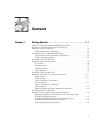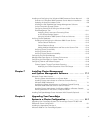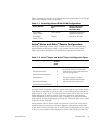
1-2 User’s Guide
NOTE: Since Datacenter Server is one of four operating systems in the
Windows 2000 platform, some of the core services incorporated within Datacenter
Server are common to all Windows 2000 platforms. In the following sections, “Win-
dows 2000” is used to identify the services common to all Windows 2000 platforms
and “Windows 2000 Datacenter Server” is used to identify services and components
specific to the Datacenter Server platform.
Overview of a Dell PowerEdge Cluster
FE100/FL100 Datacenter Server
Configuration
The PowerEdge Cluster FE100/FL100 Datacenter Server is a cluster solution that
implements 2-node to 4-node clustering technology based on the Microsoft
Windows 2000 Cluster Service (MSCS) software incorporated within the Windows
2000 Datacenter Server operating system.
NOTE: In this guide and in other cluster documentation, MSCS is also referred to as
Cluster Service.
PowerEdge Cluster FE100/FL100 Datacenter Server solutions provide the following
benefits in meeting the needs of mission-critical network application programs:
• High availability of system services and resources to network clients
• Redundant storage for application program data
• Failure recovery for cluster application programs
• Flexible maintenance capabilities, allowing you to repair, maintain, or upgrade a
cluster node without taking the entire cluster offline
• Load balancing between the cluster nodes
A PowerEdge cluster consists of two or more PowerEdge 8450 server systems
(referred to as cluster nodes) that are interconnected with hardware and software
components, providing a single point of continuous access to network services
(including file systems, databases, enterprise resource planning [ERP], and other
application programs, and services) for network clients. Each cluster node is config-
ured with software, storage, and network resources that enable it to monitor and
interact with the other nodes to provide mutually redundant operation. Because the
cluster nodes interact in this way, they appear as a single system to the network
clients.
In a standard client/server environment, a user accesses a network resource by con-
necting to a physical server with a unique Internet Protocol (IP) address and network
name. If the server fails for any reason, the user will no longer be able to access the
resource. In a cluster environment, a user does not access a physical server, but a vir-
tual server—a network resource managed by the Cluster Service that is not
associated with a physical server, and can failover to another cluster node. Virtual
servers are designed to dynamically reconfigure user resources during a connection
or hardware failure, providing a higher availability of network resources as compared
to a nonclustered PowerEdge system.


















